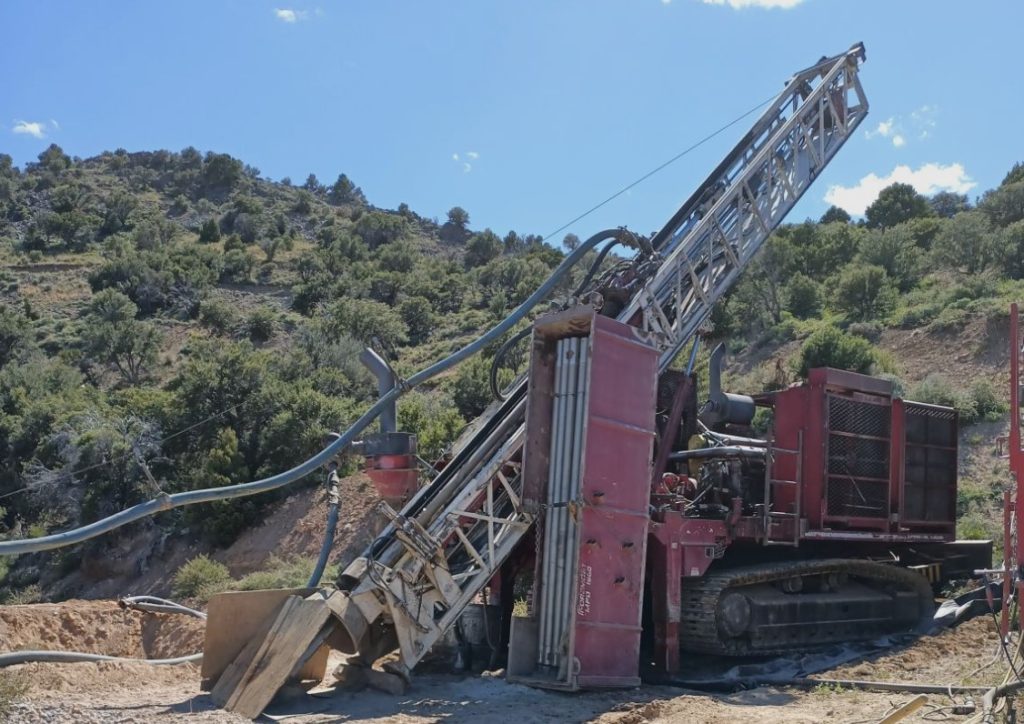North Peak Resources drills 1.06 g/t gold over 126.49 metres at Prospect Mountain, Nevada

North Peak Resources Ltd. [TSXV-NPR] reported first assay results from the continuing drilling at the Prospect Mountain North area of its Prospect Mountain property in Eureka, Nevada. The company is announcing results from the first 10 holes of the 2024 reverse circulation (RC) drill program, with seven holes from the Wabash/Williams/Silver Connor historical mine areas on the west side of the property ridge and three holes from the industry tunnel area on the east side of the property ridge.
Highlights: PM24-004 opened up potential for mineralization throughout the Wabash and Williams historical drilling area as it was almost completely mineralized, intersecting 415 feet (126.49 metres) of 1.06 g/t gold and 12.3 g/t silver from zero feet, which included 40 feet (12.19 metres) of 4.20 g/t gold and 71 g/t silver from zero feet, linking the Wabash and Williams areas.
Within this broad area, numerous, strong gossan zones with good gold grades were intersected. Results include 15 feet (4.57 metres) of 3.88 g/t gold and 56.2 g/t silver from five feet (1.52 metres) in PM24-005, near the Silver Connor shaft; 70 feet (21.34 metres) of 2.03 g/t gold and 38.3 g/t silver from five feet (1.52 metres) in PM24-006, near the Silver Connor shaft; 20 feet (6.1 metres) of 3.54 g/t gold and 23.7 g/t silver from 200 feet (60.96 metres) in PM24-007, extending from the Silver Connor shaft through the Wabash area; and 15 feet (4.57 metres) of 1.77 g/t gold and 19.4 g/t silver in PM24-010, near the historic Williams mine entrance.
Holes PM24-004 and PM24-007 suggest that the new interpretation of steeply-dipping mineralized zones along fault structures that were conduits for the gold fluids is correct. The biggest historical mine in the Wabash area appears to be downdip of the new drilling – with a 755-foot gap between where no drilling has taken place. The historical holes were drilled vertically and were not suitable for finding subvertical mineralization.
“Though a small program, drill hole results received so far have augmented the assumptions held by our geologists on widths and confirmed the company’s revised interpretation of steeply dipping mineralization, with further extension potential than previously thought,” said Brian Hinchcliffe, CEO. “Fortunately, the drillers, Envirotech, have a great crew on the rig that tackled the angled drill holes the geologists designed and that are helping to get a better understanding of the patterns of gold mineralization in this area of former high-grade mines.”
Wabash/Williams/Silver Connor area: Seven holes are reported here from the 20 holes drilled to date in this area. The voids caused by mineralizing fluids have restricted the drilling to five main drill pads from which multiple angled RC holes were drilled.
The property lies in the Battle Mountain/Eureka trend in an area known as the Southern Eureka gold belt, where three styles of mineralization have been identified: gold/silver Carlin-style mineralization; carbonate replacement gold/silver/lead/zinc mineralization (CRD); and carbonate-hosted, porphyry-related skarn lead/zinc/gold mineralization associated with Cretaceous intrusions. At the property, the CRD mineralization is heavily oxidized to depths of at least 610 metres (2,000 feet) below the top of the ridge line.
A plan of operations is in place, which covers part of the property (totalling 81 acres) and entitles an operator to pursue surface exploration, underground mining of up to 365,000 tonnes per annum and certain infrastructural works. It includes a permit to extract water from a well and to build water containment facilities.
The company recently acquired an initial 80% interest in the Prospect Mountain mine complex in Eureka, Nevada.
